The first-ever unit, which was turned into a pace car, has gone on auction. It is a perfect opportunity for us to revisit the Mustang Fox body and its importance to Ford

Car collectors are always looking for another special model to get. What could fit that definition better than the very first Fox body Mustang? As Road & Track has reported, the unit first served as a pace car and has a VIN that confirms it was the very first of its kind to roll off at Ford’s North American plants.
Car enthusiasts are always looking for another special model to learn about – even if they do not intend to buy it. We all know by now that the Mustang Fox body has experienced a popularity surge lately. What could be a better opportunity to navigate its long history than seeing its very first unit go on auction?
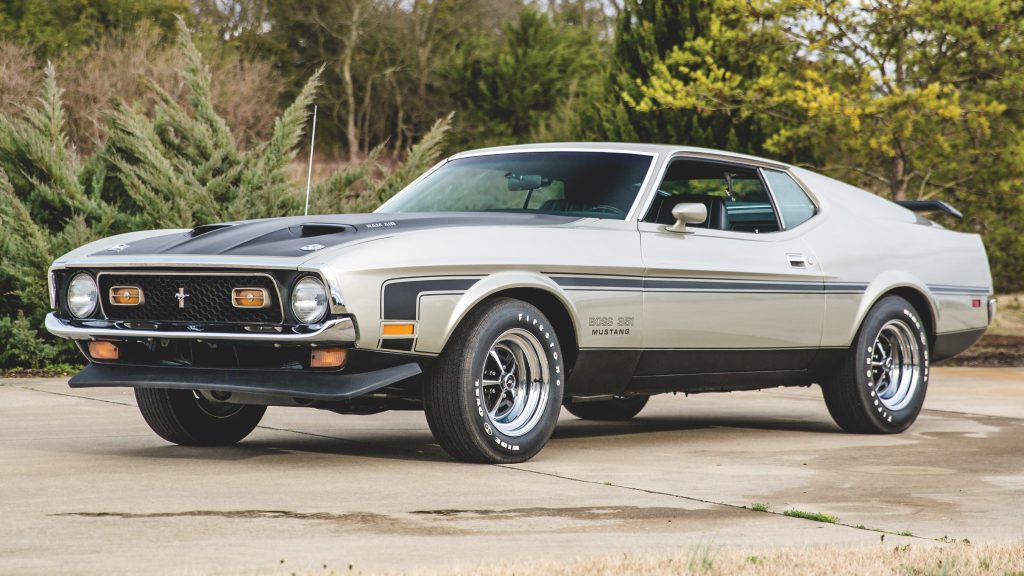
Ford Mustang in the 1970s
The car as a whole was in trouble at that time. The 1973 oil crisis arrived at the same time when USA laws became tougher in terms of emission control. The car industry had to break up with a tradition of big and powerful engines because saving fuel had become the priority. That was especially harmful to sports cars.
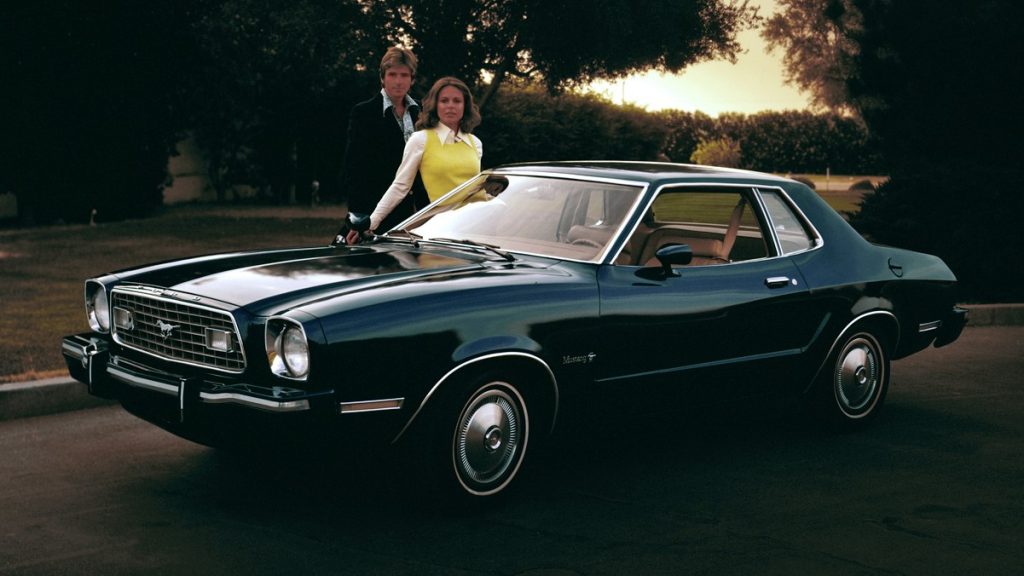
After highly successful first years, the Mustang had a sales decline which the 1971 facelift could not revert. In short, the model became larger, more expensive and, thus, went away from its pony car roots. The 1974 model presented an all-new design tailored to the new times, but that did not mean it became better.
Ford decided to use the Pinto’s platform and make the Mustang II a subcompact. It was the sensible way to go, especially to fight the wave of imported cars. However, such downsizing meant losing its signature V8 engines (at first) and charming design features such as pillarless roof, and the convertible body style.

The rise of the Mustang Fox
The new car was a reflection of its time. Ford had just released the Fox platform and wanted to apply it on as many cars as possible to cut costs. It had light weight and rear-wheel drive, so it gave family cars a nice competitive edge. For the Mustang, it was a golden opportunity to recover the image built in the 1960s.
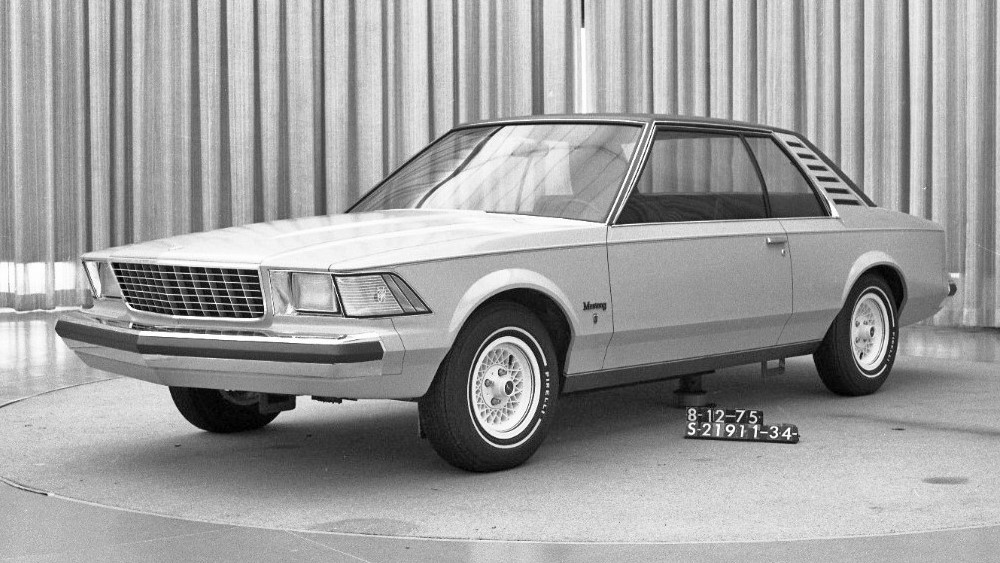
At first, Ford had ordered design studies from two teams of its own staff, and another one from Ghia. The main issue is that they were too conventional; the car would look like the two-door version of any regular sedan of its time. Fortunately, Ford could also rely on Jack Telnack, who worked at the European branch.
Ford eventually approved a much more stylish project. The slanted grille made it more aerodynamic; the recessed headlights added a sinister look while obeying the local laws; and the louvers on the rear quarter windows became a new signature trait. The Mustang recipe had been successfully adapted to the 1980s.
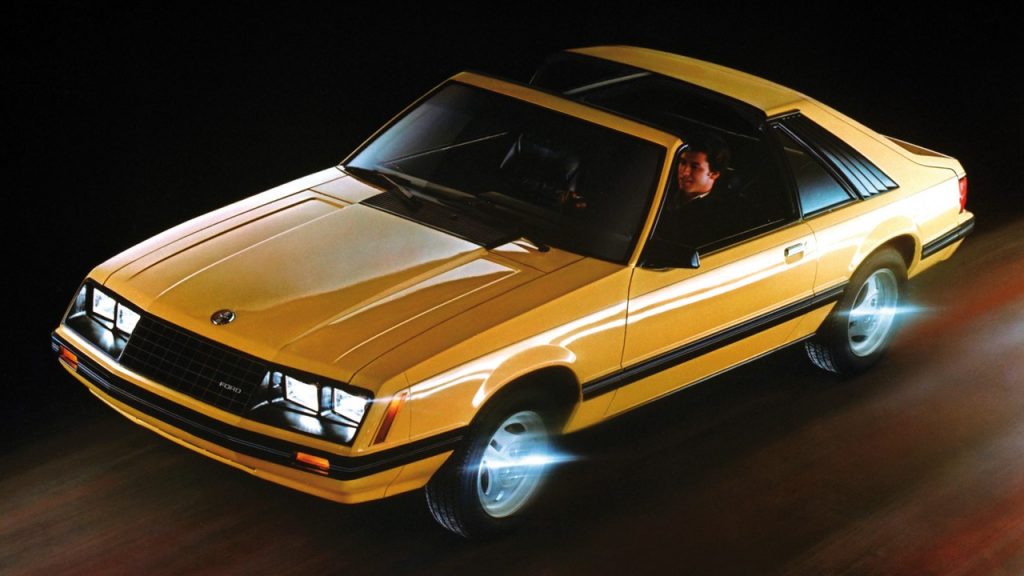
1979 Fox body Mustang
The first phase reached an interesting balance between following the trends and honoring its own history. The Mustang Fox went back to the compact segment, which meant offering a roomy cabin, and had many engine options. They went from a 2.3L I4 to the 5.0L V8, with which it became the fastest car in the USA.

Now, as excited as Ford was to rebuild its image, it could not ignore the new demands. The Mustang had its performance limited by emissions and fuel efficiency, so Ford had to focus on design and equipment. That Pace Car edition was only the first one it would receive over the years. The T-roof was another big hit.
As a sign of the times, Ford offered a turbocharged 2.3L engine along with the V8. The goal was to deliver the same performance while giving buyers opposite options. The pony car celebrated its 20th anniversary with the first convertible body style available since 1974, although it had a third-party assembly this time.
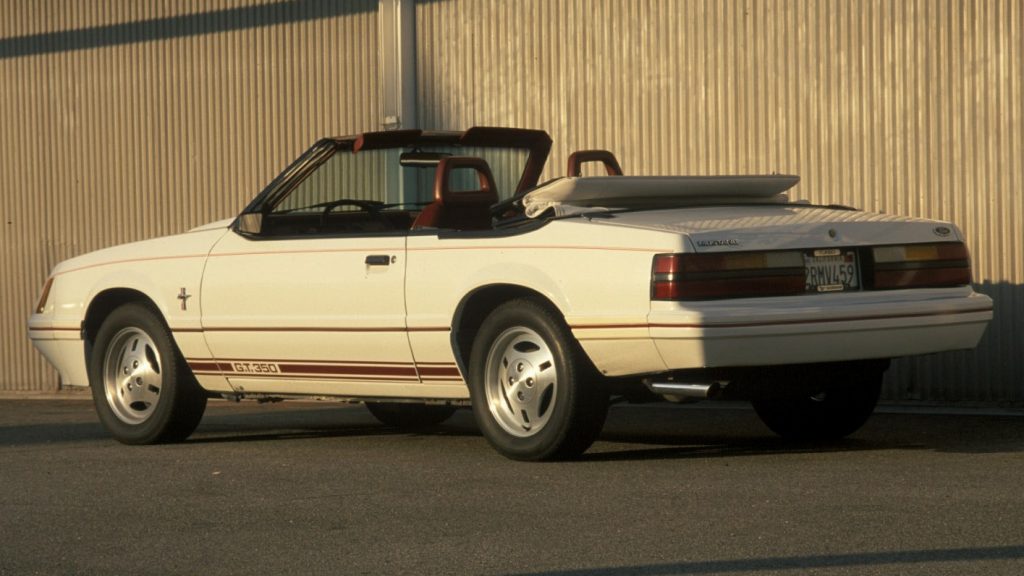
1984 Fox body Mustang
Though the malaise era was still going on, the Mustang Fox gradually offered more performance options over time. By 1984, the V8 5.0L had carbureted and fuel-injected versions, plus smaller options for higher mileage. The list of trim levels included the GT 350, which paid tribute to the Shelby version of the 1960s.
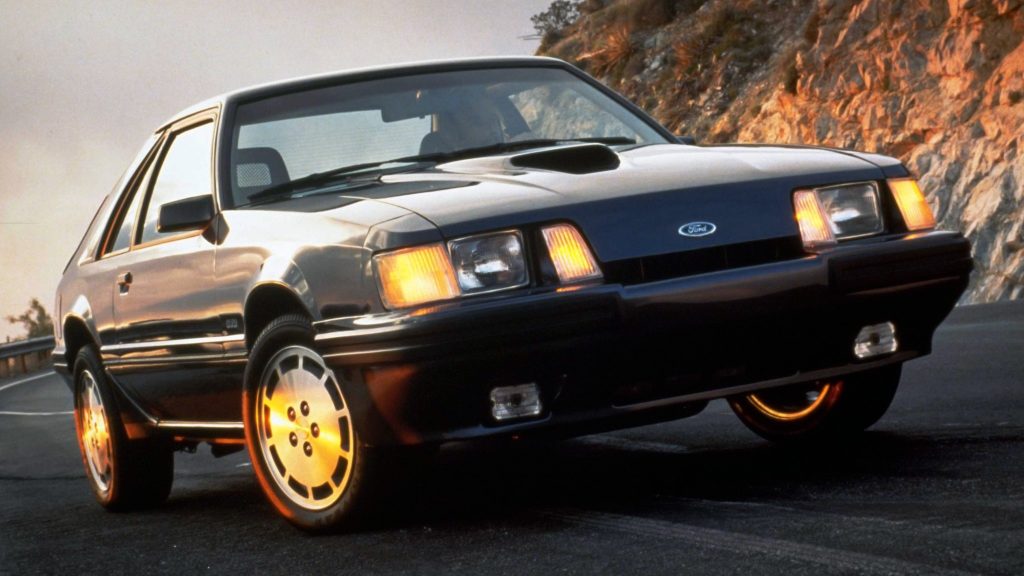
The SVO version stood out because it used the turbocharged 2.3L. Ford paired it with adjustable shocks, five-speed manual gearbox tuned by Hurst, locking differential, and disc brakes on all wheels. As if all that was not enough, it had a double-deck rear wing just like the Merkur XR4Ti which was just about to arrive.
The picture shows that the SVO marked the first visual change. By the mid-1980s, the Mustang Fox would adopt a more aerodynamic front end, with a smoother bumper design, flush headlights (partially, at first), and a narrow radiator grille or not even that. It was the beginning of its next phase, where it had a facelift.
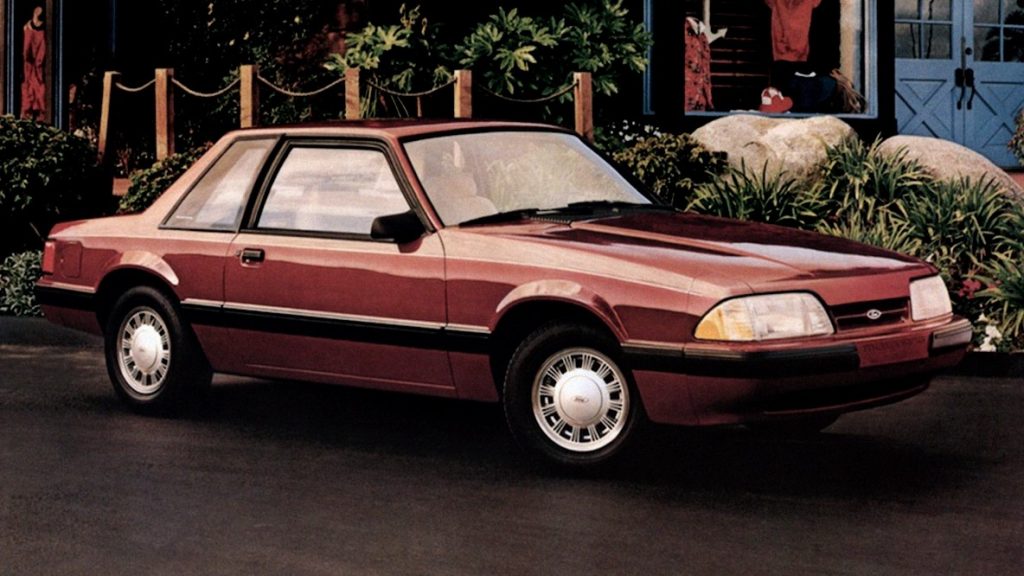
1987 Ford Mustang Fox
Ford still wanted the Fox body Mustang to cater to many buyers, so it gave its regular versions an elegant look. At first, all sportiness was concentrated on the GT version, which received an exclusive body kit. The model had turbine-style wheels, side spoilers, fog lights, and a taillight mask nicknamed “cheese grater”.
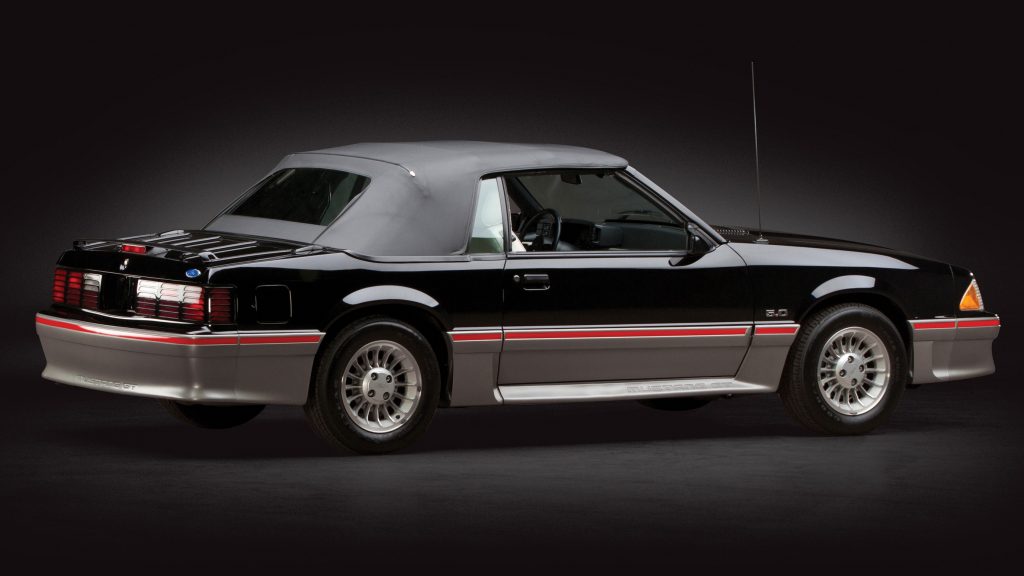
The engine options were simplified as well. The 5.0L V8 received multipoint fuel injection to reach 200 hp; Ford replaced both its old versions (to cut costs) and the turbocharged 2.3L (it had reliability issues) with it. The only other engine available was the fuel-injected 2.3L, which made the car’s options quite divisive.
By the end of the decade, the Mustang Fox was turning ten years old. The car world had new trends, and Ford had to catch up. Since most buyers wanted the old-school V8, it decided to focus on that. The maker further improved it and offered it in more trim levels, from the basic LX to the range-topper SVT Cobra.
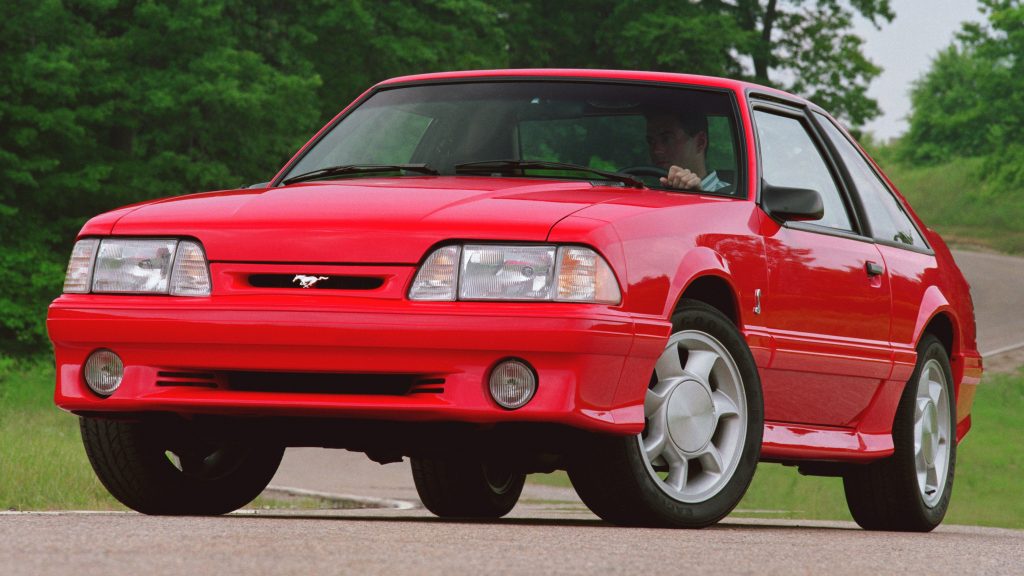
The Ford Mustang’s rebirth
In the 1980s, the oil crisis and the rise of foreign cars drove North Americans away from old-school sports models. Ford spent years working on a complete redesign to adapt the Mustang to the new scenario. The car would be codeveloped with Mazda, who was Ford’s business partner then, and use front-wheel drive.
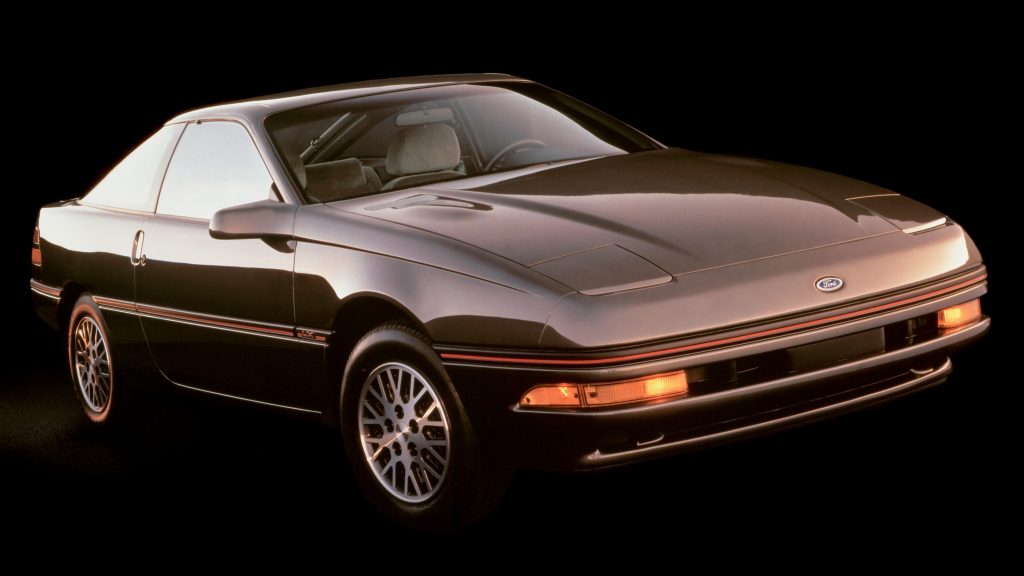
Once the press made those plans public, in 1987, popular reaction quickly appeared. Ford received letters with inflamed criticism of its decisions. Some people on the staff were against the idea too, so Ford ended up making a last-minute change: it reworked the new car to release it as a separate product, the Probe.
While the idea was fruitful, it left the Mustang problem unsolved. Ford ultimately resorted to updating the Mustang Fox once again. Then again, this time it came close to a clean-sheet design: the SN95 generation was ready in just 36 months and required an investment of US$ 700 million. It was better in all aspects.
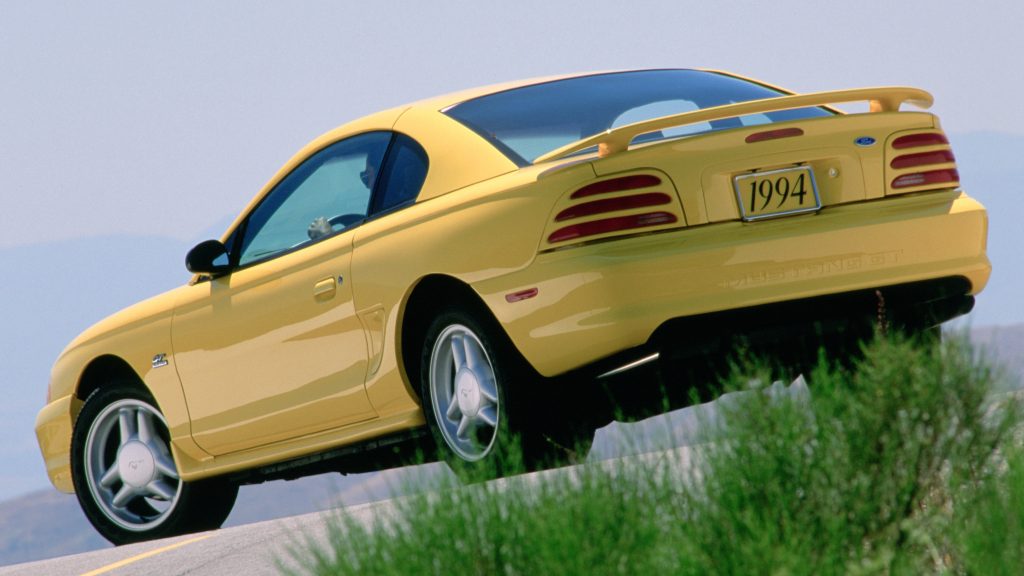
SN95 Mustang and New Edge
If you think the design had the biggest change, you will have a surprise. Ford paid even more attention to the chassis in order to improve ride quality. The unibody became stiffer, all components were more firmly attached, and the suspension was retuned. The only downside is that those changes increased its weight.
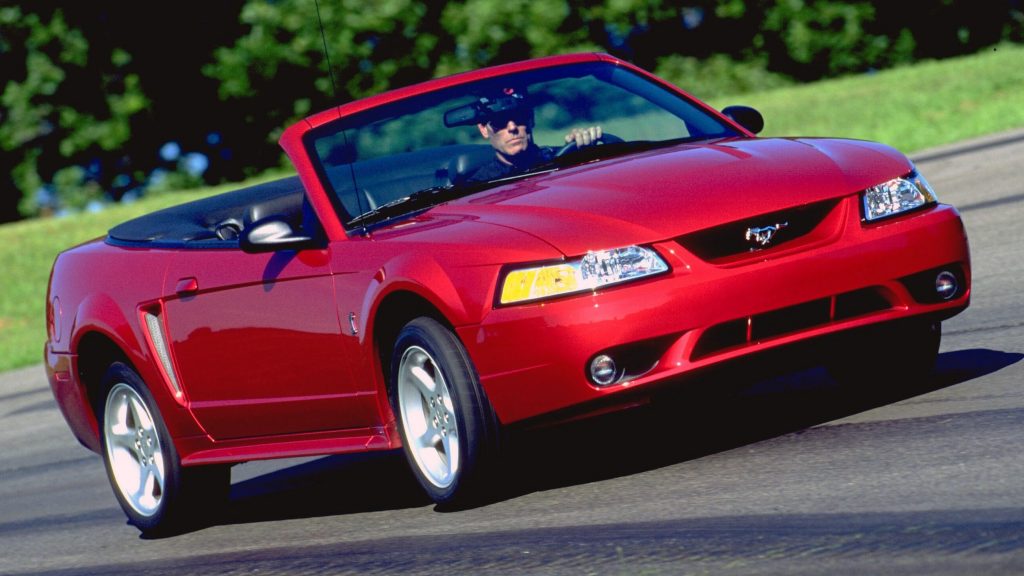
The new car had a 3.8L V6 and a reworked 5.0L V8, this time good for 215 hp. Over time, Ford would offer more performance versions such as the Cobra and the Cobra R – the latter was practically a homologation special and made 300 hp. The biggest half-life update was a more efficient 4.6L V8 to replace the old one.
Since the new project had good reception, Ford decided to extend its life. The Mustang received a facelift for 1999 where it adopted Ford’s New Edge visual identity. Basically, it adopted stronger and sharper lines while the powertrain received more performance upgrades. The New Edge Mustang was sold until 2004.
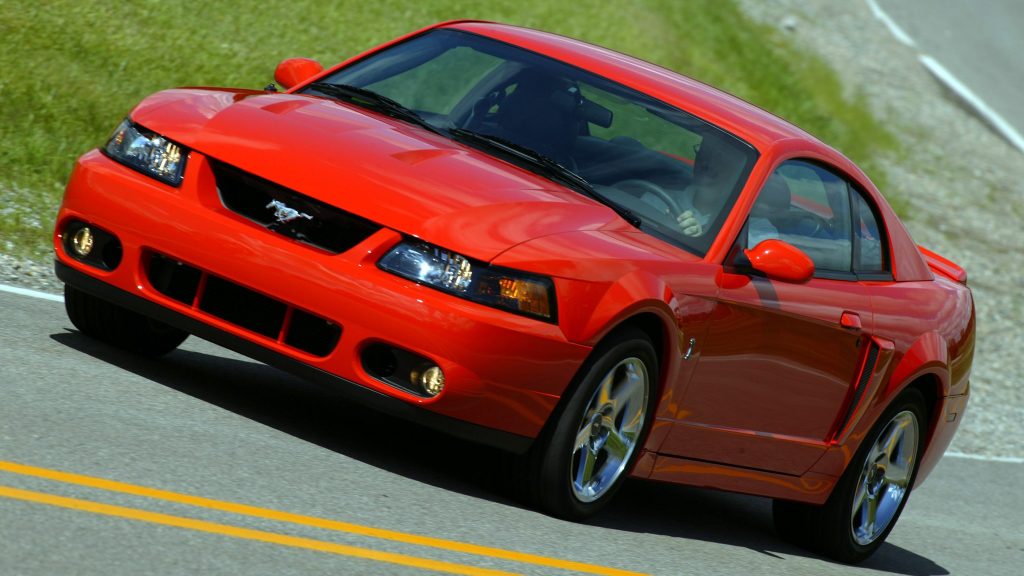
The Fox body Mustang eventually left the market in 2004. Ford invested in an all-new project with strong retro traits which would become yet another sales success. Nowadays, so many years later, the Fox model has seen its popularity rise among car fans, especially first-generation units. Which one is your favorite?
Danillo Almeida has explored his passion for cars in two distinct ways. The first one is his graduation course in Mechanical Engineering, which will hopefully lead to a job position in the field. The other one is expressing his knowledge and opinions on the matter through writing. Almeida has already contributed to blogs, stores, and websites in general writing automotive content in many formats.



